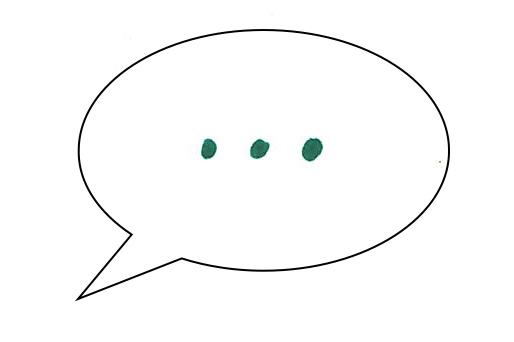Everyone knows what ellipses are, but when it comes to using them, there’s not a lot of definitive advice. The one rule that you’ll find consistently is that they’re used to indicate when and where you’re skipping over parts of a quoted text. That’s very helpful for academic pieces. For creative writing, not so much. As a result, writers tend to make up their own rules or avoid ellipses entirely.
The one consensus around ellipses that I’ve noticed in fiction is that they’re used in dialogue to signal an incomplete thought. There are a number of story-specific situations that could justify using them, so I’ll focus on the most common scenarios here.

Stopping a Sentence Short
For any number of reasons, a character can choose to stop a sentence short and leave the thought incomplete. It could be as simple as the character starting the sentence, changing their mind, and starting over with a new sentence.
No use dwelling on it. Just… Tell me straight. Does this mean we’re all screwed?
Other times, a character may abandon the sentence and thought entirely. His silence can prompt other characters to continue the scene without him.
A: I’m saying, he’s…
B: He’s what?
C: Yes, what am I?
B: Oh! Hey, man. Didn’t see you there.
Interruptions
Characters getting interrupted is another common scenario you’ll run into. Characters can easily interrupt each other.
You must think me callous for…
Boss. I told you then, and I’ll keep telling you. Uzun died doing what she loved. She had no regrets.
Characters can also be interrupted by things happening around them.
“Don’t you ever worry that one day those kids will…?”
A baseball crashed through the window.
Note that the question above still gets a question mark after the ellipses. This makes it clear to the reader that the character talking was asking a question before the baseball interrupted her. Incomplete sentences and phrases that would usually end with an exclamation mark follow the same logic.
Finishing Each Other’s Sentences
Another situation you may run into is characters finishing each other’s sentences. Rhythmically, this is no different than an interruption, but it’s a semantically unique case. You’re spreading out a single thought between multiple characters. You can use ellipses to clue the reader into what is happening and prompt them to connect these incomplete phrases together. Mark the end and beginning of each character’s line with ellipses. Once you reach the end of the sentence, punctuate it like normal.
B: I’ll keep them confused. Cipher…
C: …stop anyone trying to escape, and you’ll…
A: …go for the jugular.
B: We’ll back you up if you need us.
C: Sounds like a plan.
What are some other ways you’ve seen ellipses used in fiction? Has this post inspired you to vary up your dialogue? What would you like to see me talk about on the next “How Do I?” Leave your comments down below.